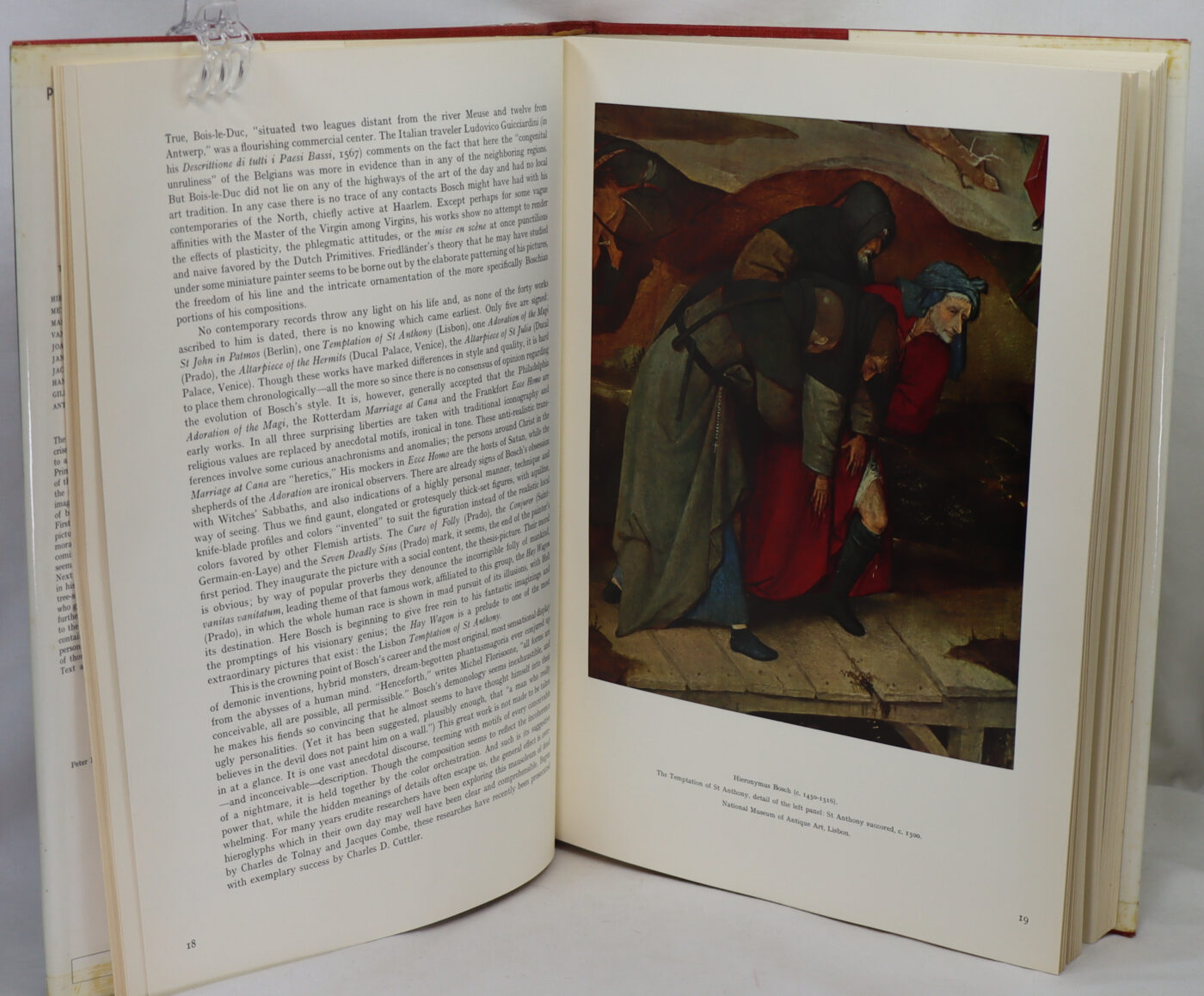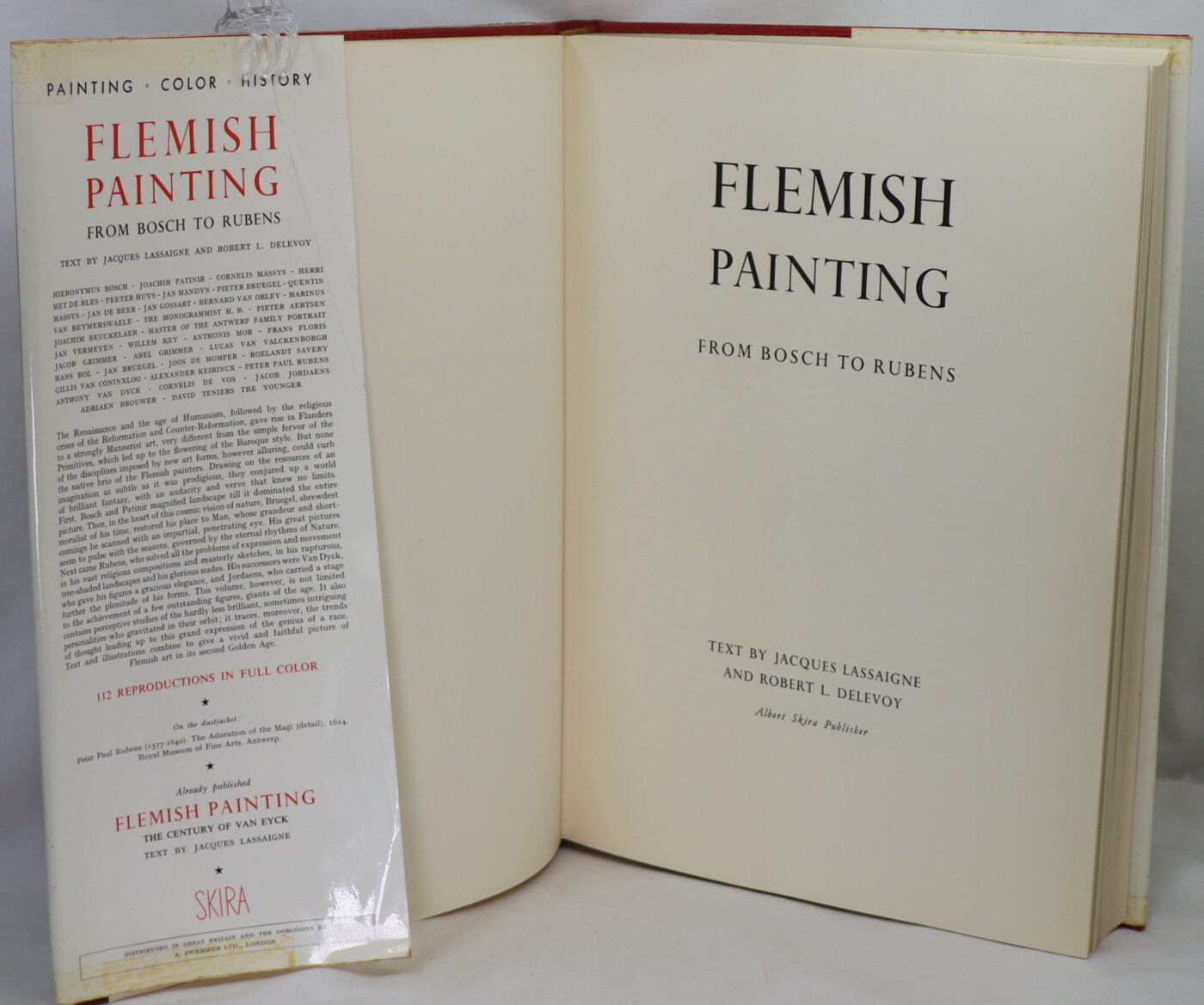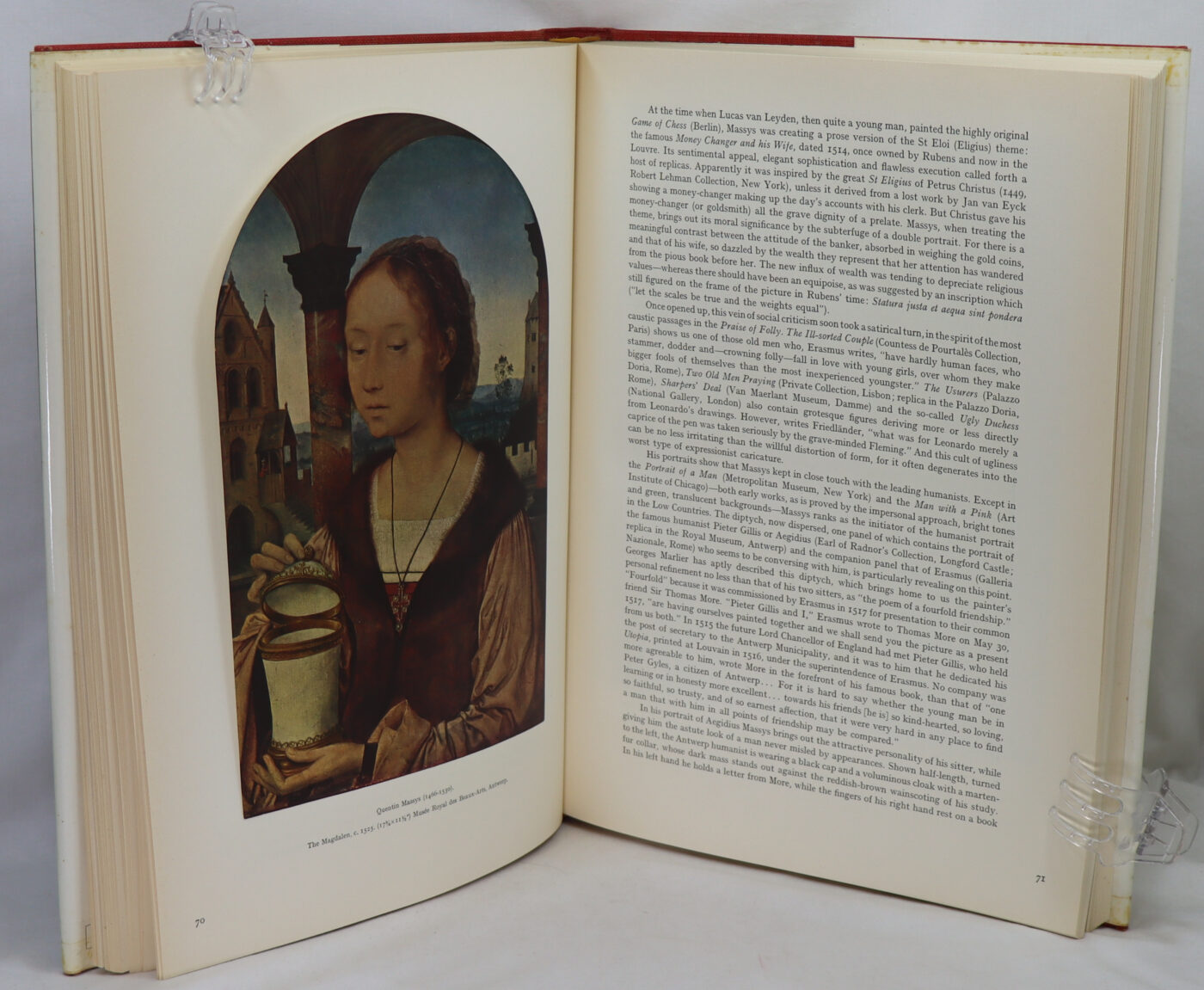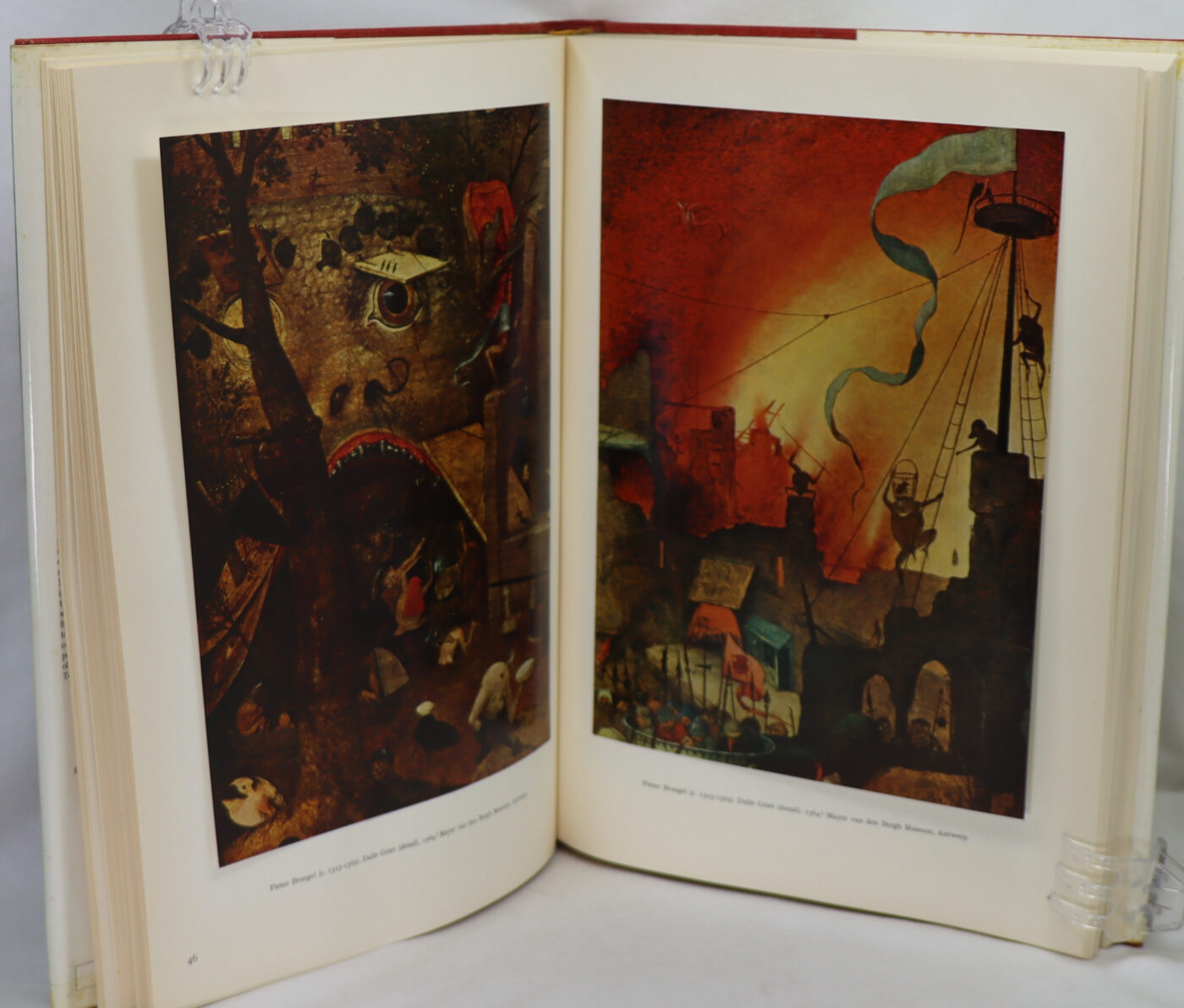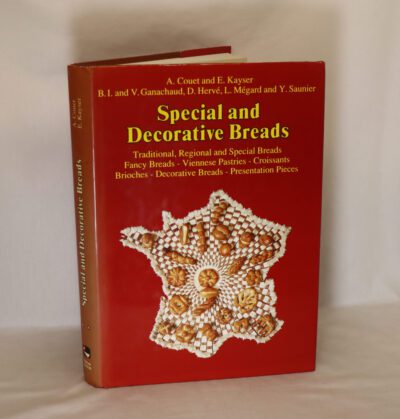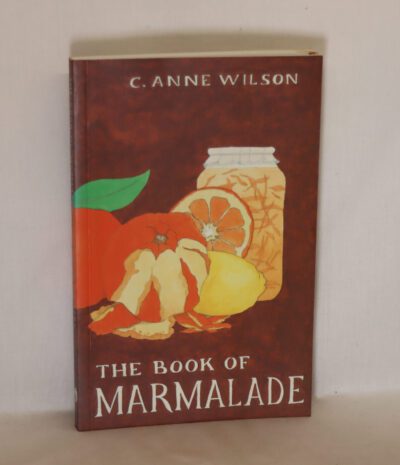Flemish Painting. From Bosch to Rubens.
By Jaques Lassaigne & Robert L Delevoy
Printed: 1938
Publisher: Albert Skira. Lausanne
| Dimensions | 26 × 35 × 3 cm |
|---|---|
| Language |
Language: English
Size (cminches): 26 x 35 x 3
Condition: Good (See explanation of ratings)
Item information
Description
In the original dust cover. Red cloth binding with black title on the spine and front board.
We provide an in-depth photographic presentation of this item to stimulate your feeling and touch. More traditional book descriptions are immediately available.
- Note: This book carries a £5.00 discount to those that subscribe to the F.B.A. mailing list
A very early hard back. Please view our extensive photographs. Translated by Stuart Gilbert. Profusely illustrated with fine mounted color plates, several folding. A finely illustrated study of 15th century Flemish painters with bibliography.
Flemish painting flourished from the early 15th century until the 17th century, gradually becoming distinct from the painting of the rest of the Low Countries, especially the modern Netherlands. In the early period, up to about 1520, the painting of the whole area is (especially in the Anglophone world) typically considered as a whole, as Early Netherlandish painting. This was dominated by the Flemish south, but painters from the north were also important. Dutch and Flemish Renaissance painting, of which Antwerp became the centre, covers the period up to about 1580 or later, by the end of which the north and south Netherlands had become politically separated. Flemish Baroque painting was especially important in the first half of the 17th century, dominated by Rubens.
In theory the term does not refer to modern Flanders but to the County of Flanders and neighbouring areas of the Low Countries such as the Tournaisis and Duchy of Brabant. However this distinction, well understood in modern Belgium, has always been disregarded by most foreign observers and writers. Flanders delivered the leading painters in Northern Europe and attracted many promising young painters from other countries. These painters were invited to work at foreign courts and had a Europe-wide influence. Since the end of the Napoleonic era, Flemish painters have again been contributing to a reputation that had been set by the Old Masters.
The Franco-Flemish School of musical composition flourished beginning at about the same time.
Want to know more about this item?
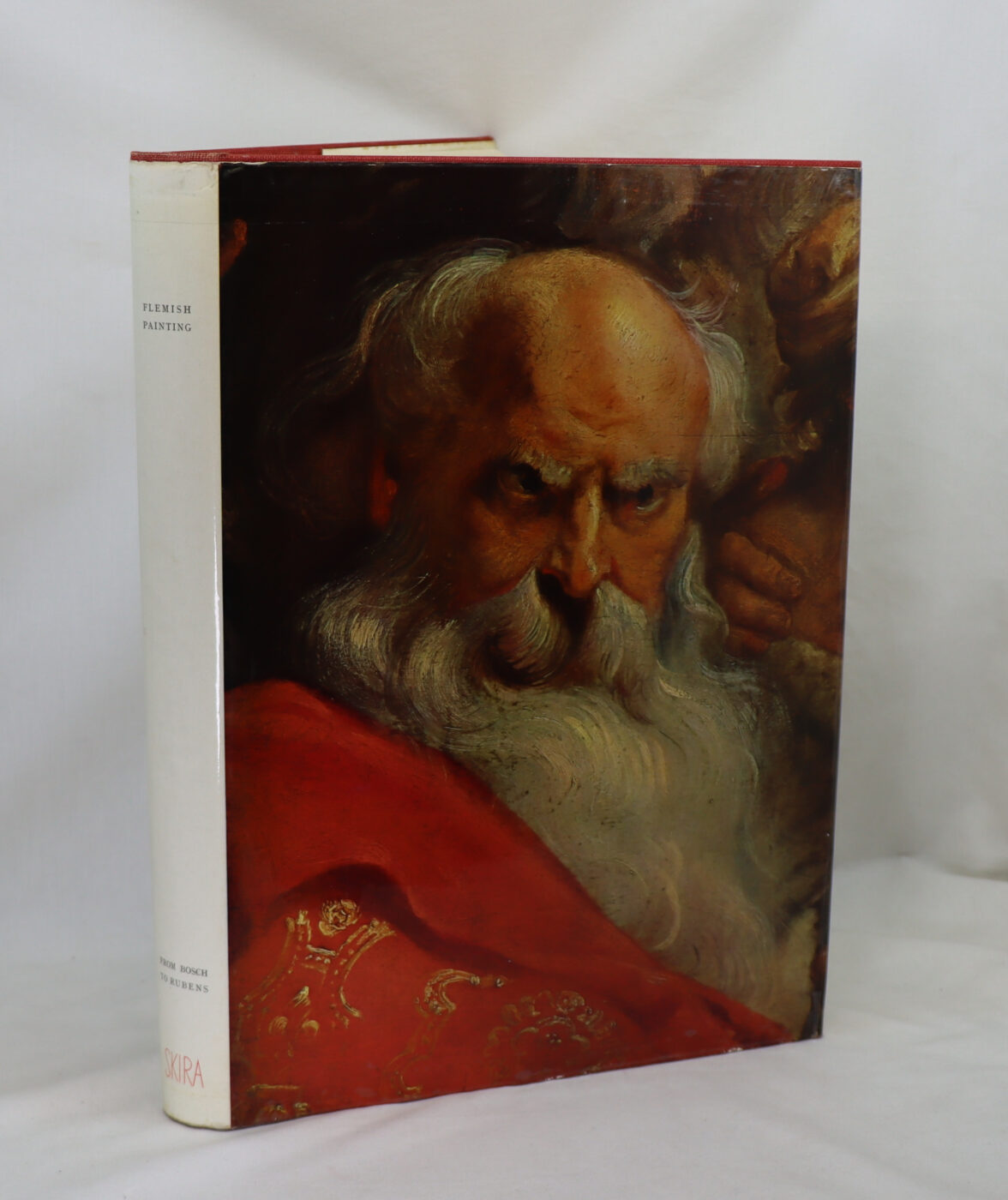
Related products
Share this Page with a friend

